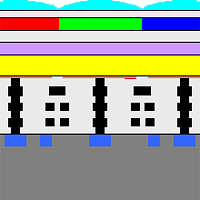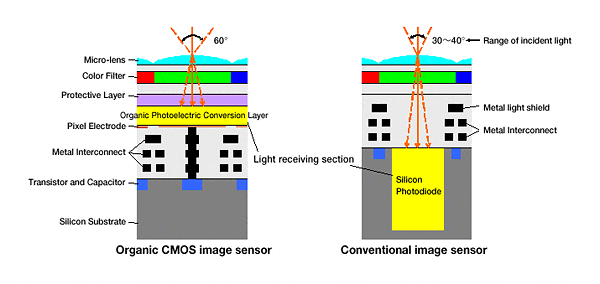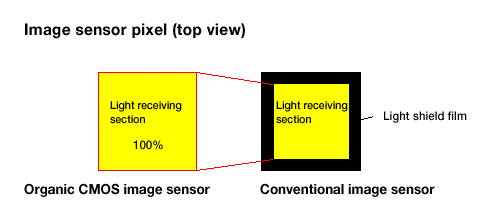Fuji and Panasonic join forces for organic CMOS sensor tech, but is it evolution or revolution?
posted Friday, June 14, 2013 at 4:14 PM EDT

Although the overwhelming majority of digital cameras ship with standard, Bayer-filtered CMOS (or occasionally, CCD) sensors from the likes of Sony, there are a few companies in the market who like to go it their own way. Fujifilm and Panasonic are two examples, and the duo have partnered to create a brand-new sensor tech claiming improvements in two key areas.
Over the years, one-time 35mm film giant Fujifilm has built a reputation for unusual sensor designs, especially in its premium models. It all started with the octagonally-structured Super CCD image sensor, way back in 1999. Subsequent sensor tech from Fuji includes the dual-element Super CCD SR, and the uniquely-filtered Super CCD EXR, the latter making the jump to CMOS chips as EXR CMOS. They've since been joined by another filter design that's even more unusual, dubbed X-Trans.

For its part, Panasonic has largely used more typical CCD and Live MOS chips in its cameras, with the latter being the company's equivalent of other manufacturers' CMOS chips. (Live MOS initially differed from CMOS slightly in its structure, but we're not sure if that's the case any more.) Behind the scenes, though, Panasonic is hard at work inventing and patenting new sensor tech. Most recently, the company unveiled a prototype sensor based on micro color splitters earlier this year. The technology for that chip is nicely explained in a followup post, should you want to better understand how it works.
Now, Fujifilm and Panasonic have pooled their resources to create a new sensor technology that they say offers greater dynamic range than any other sensor tech on the market, coupled with improved acceptance of light at extreme angles of incidence. The new organic CMOS image sensor replaces the photodiodes of a standard CMOS chip with an organic film layer just 0.5 microns thick -- around 1/6th the thickness of a typical photodiode, according to its creators. This coupled with moving the interconnect stack beneath the light-sensitive area, just as in a BSI CMOS sensor, allows the incident light angle to be increased from the 30-40° of a typical CMOS sensor to a much more generous 60°.

Press materials for the new sensor also suggest that no light shield is needed to prevent crosstalk between adjacent pixels, increasing the light-gathering area available per pixel. Of course with a standard sensor, you can limit the light shield loss somewhat by applying a microlens over each pixel; Panasonic and Fuji claim 1.2 times greater light sensitivity thanks to the design, but it isn't clear whether this comparison is against a sensor with microlenses or not.
The companies also claim a dynamic range of 88dB, which is said to be an industry high. If accurate -- and it's not entirely clear how it's being measured -- that would equate to around 14.6 stops of dynamic range.* By way of comparison, DxOMark currently rate the Nikon D800 at 14.4 stops, and eight cameras at 14 stops or above. That would suggest that while still a worthwhile improvement, the new tech will not be making a night-and-day difference, but rather an incremental one.

Still, this is a development announcement, not a final product, and it's quite possible the design could still have the scope for significant improvement, unlike standard CMOS which is a known quantity. (And equally, there's no guarantee that the tech will see the light of day in a retail product, although the companies do note that the organic layer is coated in a protective, inorganic film layer and has passed a range of reliability tests, suggesting they're preparing for broad availability.)
Should the new tech reach retail cameras, it will be interesting indeed to see how much of a real-world difference it makes.
(via SLR Lounge)
(* We've seen some confusion surrounding this dB figure on the web, with claims that 88dB would equal 29 stops of dynamic range, but that's assuredly not the case. dB measurements are used differently in various fields, and while many of these use 10 log 10, for imaging purposes its 20 log 10. A dynamic range of 29 stops would amount to a resolution of less than a single photon, based on typical sensor well depths.)